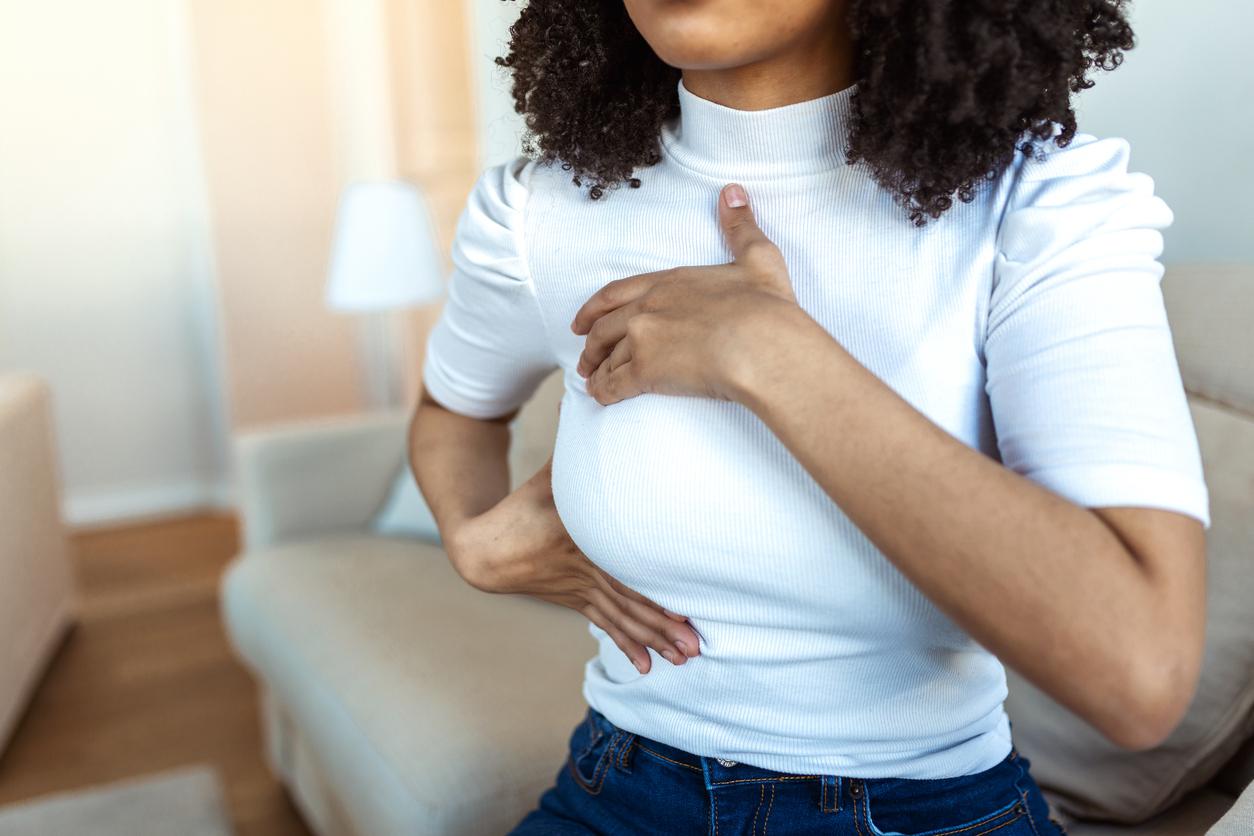Nutrition, physical activity, alcohol, exposure to chemicals… How can lifestyle influence the risks of developing breast cancer? Why Doctor asked the question to an oncologist from the National Cancer Institute.

Oncologist and University Professor at Tours University Hospital, Professor Claude Linassier directs the prevention, organization and care pathway at the National Cancer Institute.
Why Doctor: If breast cancers are strongly linked to certain factors such as age or heredity, it is, like many cancers, also associated with our lifestyle habits. Can we prevent it by changing them?
Professor Linassier: Certain factors are in fact specific to breast cancer, but it must be understood that there are also more generic factors, which confer an increased risk of cancer for many tumors: tobacco, alcohol, an unbalanced diet, exposure to UV radiation, lack of physical activity… These toxic exogenous factors promote the genesis of cancer, particularly breast cancer. There are more than 61,000 new cases of breast cancer each year in France. If we consider these lifestyle factors, it is estimated that 8,000 of these cases are attributable to alcohol, 4,500 to overweight and obesity, 2,500 to tobacco, 2,300 to poor diet and 1,700 to lack of physical activity. Knowing that risk factors often combine: for example, the less you eat well, the more the risk of being overweight increases and the more difficult it will be to have sufficient physical activity.
Why does diet specifically influence breast cancer risk?
It is above all overeating which seems problematic: it is responsible for weight gain, and this weight gain is at the origin of what is called hyperestrogenism, since there is estrogen metabolism at the level fat. However, this prolonged hyperestrogenism will continuously stimulate the secondary sexual organs, including the breast, and thus participate in carcinogenesis. Any diet that will cause excess weight, or even obesity (ultra-processed products, sugar, etc.) will therefore contribute to increasing the risk of breast cancer. It is therefore advisable to have a varied diet, with five portions of fruit and vegetables per day, whole grains, and little red meat. It is also recommended to avoid as much as possible ultra-processed products, the consumption of which in large quantities has been correlated with an increase in breast cancer.
Based on epidemiological estimates in industrialized countries, approximately 15% of breast cancers are linked to regular alcohol consumption.
It must be understood that no “miracle” diet protects or cures cancer, particularly fasting, which risks endangering health. The promoters of these practices take refuge behind pseudo-scientific “proofs”, but are above all guided by the lure of profit. I refer you to the Miviludes which, in France, is responsible for tracking down these sectarian excesses.
How much can physical activity prevent the risk of breast cancer? And which activity should you turn to: lose weight, gain muscle…?
There is not necessarily a specific exercise, you mainly need regular physical activity and fight against a sedentary lifestyle: practice at least 30 minutes of physical activity per day, take the stairs, walk… This can be add an hour of more intense activity on the weekend, but it is necessary to adapt the activity according to your abilities.
To what extent are tobacco and alcohol among the biggest risk factors for breast cancer?
Based on epidemiological estimates in industrialized countries, approximately 15% of breast cancers are linked to regular alcohol consumption. Even moderate consumption can pose risks. It is now recommended not to exceed two glasses of alcohol per day, or ten glasses per week, regardless of the type of alcohol. First, alcohol has direct toxicity. It is also very high in calories and promotes overweight, fat accumulation, increased estrogen metabolism and hyperestrogenism.
The majority of women are not aware of the link between alcohol, weight gain and increased risk of breast cancer, although it is well understood that alcohol is linked to breast cancer. liver and liver diseases. This forgets that a risk factor such as alcohol is often involved in the development of many diseases. Tobacco, for example, not only promotes lung cancer, but also 17 other cancers: ENT cancers, but also bladder, cervical, breast and even pancreatic cancers.
Certain endocrine disruptors clearly have a potential carcinogenic risk.
What are the gynecological risk factors associated with breast cancer? We know in particular that childbearing age or breastfeeding can play a role…
Yes, these are natural risk factors. It’s still a question of estrogen: if a woman has early periods or late menopause, for example, this increases the duration of exposure to estrogen, and therefore the risk. Likewise, the continued use of estrogens, as part of menopausal hormone replacement therapy (HRT), increases the risk of developing breast cancer, particularly when the duration of HRT exceeds 5 years. This is why in 2023, the National Agency for the Safety of Medicines and Health Products (ANSM) issued recommendations restricting the use of THMs to treatments over short periods and only in cases of menopausal disorders leading to an alteration of the quality of life. Another gynecological factor is nulliparity: women who do not have children are, due to the absence of renewal of the mammary gland, at greater risk of carcinogenesis. On the other hand, we know that breastfeeding, when possible and the woman wishes it, has a protective effect.

Less known are the risks of breast cancer linked to cosmetics. For example, are certain deodorants containing aluminum salts really carcinogenic, as some studies claim?
Today, no study has confirmed a causal relationship between aluminum salts in deodorants and breast cancer. On the other hand, the aluminum production process is suspected of being linked to an increased risk of lung and bladder cancer among workers exposed to it for at least ten years. But we are here in a different exhibition. In general, you should be careful of false information circulating, such as the rumor that wearing an underwired bra promotes cancer. This is completely false.
What about endocrine disruptors, like phthalates, parabens and phenols, which are in cosmetics – among other industrial products?
Numerous studies focus on the impact of endocrine disruptors, which are everywhere, from plastic bottles to medicines to cosmetics, such as shampoos or lipsticks. Some clearly have a potential carcinogenic risk. But, these disruptors being everywhere, it is difficult to carry out epidemiological studies which compare control populations, completely free of these disruptors, with populations which are exposed to them.
The best prevention of breast cancer is to get screened. Detected early, the 5-year survival prognosis is more than 90%.
Many common chemicals containing these endocrine disruptors are suspected of promoting breast cancer. A recent study counted more than 900, in food, drinks, medicines… How can we miss them?
The problem is that legislation is quite fluid: when an endocrine disruptor whose harmfulness has been proven is banned, it is common for it to be replaced by other products that are not banned, but which can also prove to be toxic… It is a complex public health problem which should not overshadow avoidable toxic substances such as tobacco or alcohol.
If we follow all these lifestyle recommendations to the letter, how much can we hope to reduce our risk of developing breast cancer?
The avoidable risk factors for breast cancer are known: the harmfulness of tobacco, alcohol and even a lack of physical activity have been statistically demonstrated. But we don’t have the ability to say, for a given person, that lifestyle interventions will reduce their risks by 10 or 20%. There is no such thing as 0 risk. We must try to have the most normal and healthy life possible, avoiding exposure to toxic products such as alcohol and tobacco. But the best prevention of breast cancer is to be screened. As a reminder, not all cancers are screenable; there are only 3 locations for which national screening is organized: the breast, the cervix and colorectal cancer.
A little less than one in two women aged 50 to 74 have been screened of breast cancers between 2022 and 2023. How to convince others?
It should already be remembered that in the majority of cases, no abnormality will be detected and the woman who has carried out a screening will then be reassured. In the event of a diagnosis of breast cancer (7 women out of 1,000 as part of organized breast cancer screening), the diagnosis can be made at an early stage, which will allow less intensive treatments because the tumors are of smaller size. And in this case, 9 out of 10 women will still be alive 5 years after diagnosis; there will be only 26 women out of 100 if the disease is diagnosed at an advanced stage, particularly with metastases. For these women, the treatments will often be heavy (chemotherapy, breast removal, etc.). You should definitely not wait for symptoms to get tested.

















